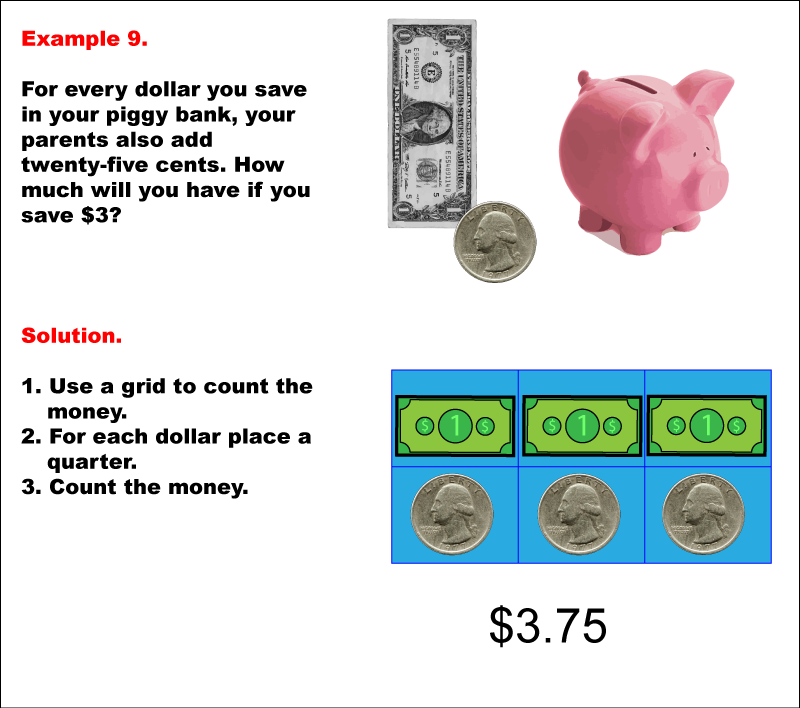
Display Title
Math Example--Math of Money--Piggy Bank Math: Example 9
Display Title
Math Example--Math of Money--Piggy Bank Math: Example 9

Topic
The Math of Money
Description
Image showing a piggy bank, a dollar bill, and a quarter. Below, a grid with three dollar bills and three quarters is used to represent the total amount saved. Example 9: For every dollar saved, parents add 25 cents. If you save \$3, you will have \$3.75. Solution involves using a grid to count money: place a quarter for each dollar and count the total.
These examples illustrate how to manage money effectively by understanding saving and spending patterns. Each worked example provides a practical scenario for teaching students the basics of financial literacy.
Seeing multiple worked-out examples is crucial for students to comprehend a concept fully. By analyzing different cases, they develop a deeper understanding and learn to generalize the principles to other situations.
Teacher Script: Let's analyze this specific example: Image showing a piggy bank, a dollar bill, and a quarter. Below, a grid with three dollar bills and three quarters is used to represent the total amount saved. Example 9: For every dollar saved, parents add 25 cents. If you save \$3, you will have \$3.75. Solution involves using a grid to count money: place a quarter for each dollar and count the total. Notice how the math illustrates the importance of consistent actions, such as saving or spending. Ask yourself: What steps were taken in this example, and how does it help you understand the concept better? Think about how you can apply this scenario to your own financial decisions.
For a complete collection of math examples related to The Math of Money click on this link: Math Examples: Piggy Bank Math Collection.
| Common Core Standards | CCSS.MATH.CONTENT.2.MD.C.8 |
|---|---|
| Grade Range | 1 - 2 |
| Curriculum Nodes |
Arithmetic • Measurement • Working with Money |
| Copyright Year | 2020 |
| Keywords | piggy bank math, math of money |